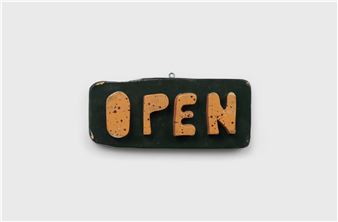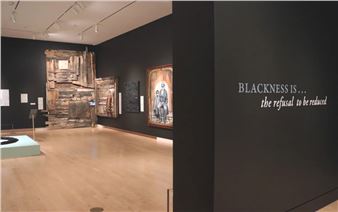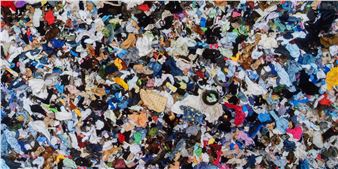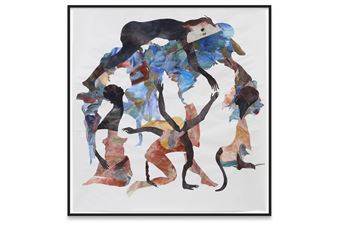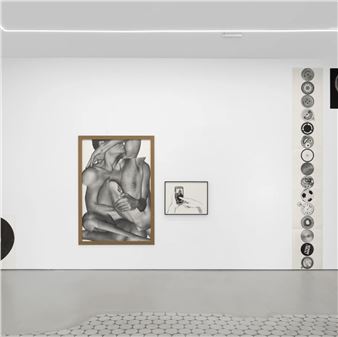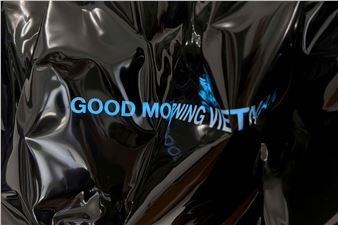Are We There Yet?
NOME is pleased to announce are we there yet?, a group exhibition that critically examines issues of police brutality, mass incarceration, discrimination, immigration, and state surveillance. The show draws its title from a work by Kameelah Janan Rasheed, whose aphoristic text-based practice often grapples with complex societal questions. As with many of her works, are we there yet? carries multiple meanings, symbolizing both a push for equality and the darker undercurrents of state violence. The exhibition invokes Rasheed’s question to probe the spread of authoritarianism in contemporary society.
are we there yet? brings together a diverse group of artists whose works interrogate systems of control, power, and resistance. James Bridle’s video Seamless Transitions explores sites of immigration judgment, detention, and deportation, using image-making technologies to visualize places and processes that would otherwise be obscured from view. Paolo Cirio’s photographs explore privacy and surveillance through works like Obscurity, which appropriates mugshot website images and manipulates them with a custom algorithm to render individuals unrecognizable. Cian Dayrit’s sculpture A Muse to Abuse, presented for the first time outside of the Philippines, offers a powerful commentary on the lingering effects of colonialism. Navine G. Dossos presents a poster with logos of different environmental organizations that the British government has labeled as “terrorist.”Ahmet Öğüt presents a series of sculptures based on archival photographs of people who were attacked by police dogs, drawing a visceral connection between historical and contemporary acts of police violence. Igor Grubić’s East Side Story juxtaposes footage of incidents where participants in Gay Pride demonstrations in Belgrade (2001) and Zagreb (2002) were subject to verbal and physical abuse by neo-Nazi groups and other citizens with a video performance in which dancers performatively reconstitute the events. Kite presents a video about LAPD tactics to suppress protest, while a work by Voluspa Jarpa evidences police brutality against civilians during the 2020 protest in Santiago de Chile.
are we there yet? will also feature new works by Camae Ayewa and Danielle Brathwaite-Shirley, both of whom were commissioned to create pieces for the show and will join NOME’s program in 2025, as well as new and recent works from Sadie Barnette, Aram Bartholl, Dread Scott, Myriam Zarhloul, Priscilla Dobler Dzul and Kameelah Janan Rasheed, who together offer a multifaceted exploration of police violence, state surveillance, and the enduring fight for justice. A curatorial text by the American art historian Romi Crawford will further develop the themes explored by the works in the exhibition.
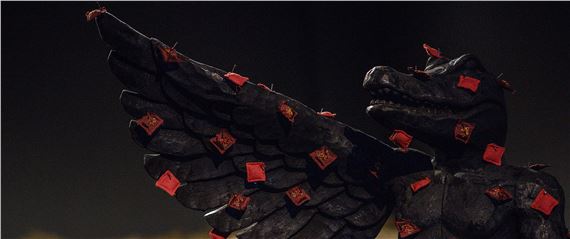
Recommended for you
NOME is pleased to announce are we there yet?, a group exhibition that critically examines issues of police brutality, mass incarceration, discrimination, immigration, and state surveillance. The show draws its title from a work by Kameelah Janan Rasheed, whose aphoristic text-based practice often grapples with complex societal questions. As with many of her works, are we there yet? carries multiple meanings, symbolizing both a push for equality and the darker undercurrents of state violence. The exhibition invokes Rasheed’s question to probe the spread of authoritarianism in contemporary society.
are we there yet? brings together a diverse group of artists whose works interrogate systems of control, power, and resistance. James Bridle’s video Seamless Transitions explores sites of immigration judgment, detention, and deportation, using image-making technologies to visualize places and processes that would otherwise be obscured from view. Paolo Cirio’s photographs explore privacy and surveillance through works like Obscurity, which appropriates mugshot website images and manipulates them with a custom algorithm to render individuals unrecognizable. Cian Dayrit’s sculpture A Muse to Abuse, presented for the first time outside of the Philippines, offers a powerful commentary on the lingering effects of colonialism. Navine G. Dossos presents a poster with logos of different environmental organizations that the British government has labeled as “terrorist.”Ahmet Öğüt presents a series of sculptures based on archival photographs of people who were attacked by police dogs, drawing a visceral connection between historical and contemporary acts of police violence. Igor Grubić’s East Side Story juxtaposes footage of incidents where participants in Gay Pride demonstrations in Belgrade (2001) and Zagreb (2002) were subject to verbal and physical abuse by neo-Nazi groups and other citizens with a video performance in which dancers performatively reconstitute the events. Kite presents a video about LAPD tactics to suppress protest, while a work by Voluspa Jarpa evidences police brutality against civilians during the 2020 protest in Santiago de Chile.
are we there yet? will also feature new works by Camae Ayewa and Danielle Brathwaite-Shirley, both of whom were commissioned to create pieces for the show and will join NOME’s program in 2025, as well as new and recent works from Sadie Barnette, Aram Bartholl, Dread Scott, Myriam Zarhloul, Priscilla Dobler Dzul and Kameelah Janan Rasheed, who together offer a multifaceted exploration of police violence, state surveillance, and the enduring fight for justice. A curatorial text by the American art historian Romi Crawford will further develop the themes explored by the works in the exhibition.
Contact details


 ARTISTS
ARTISTS







